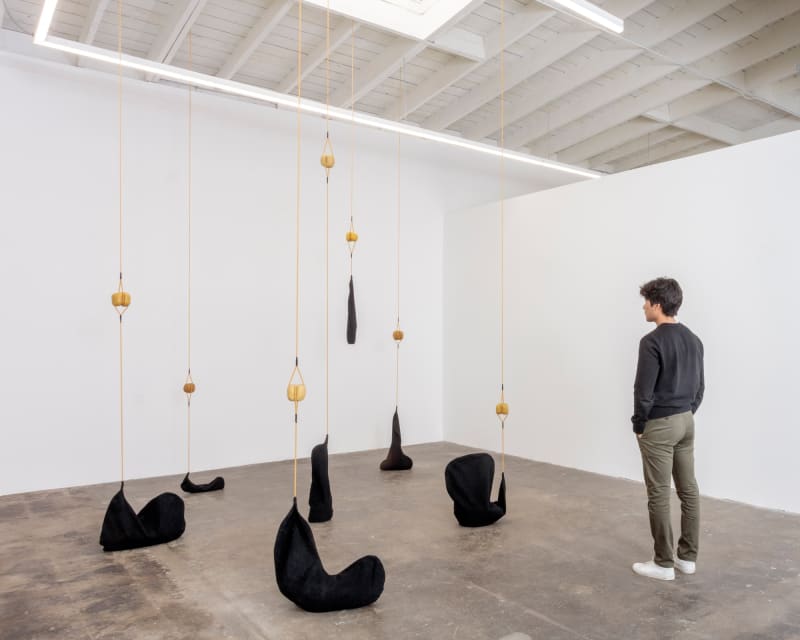Review of the exhbition WE ARE EXPERIENCING SOME TURBULENCE PLEASE STOW AWAY YOUR ELECTRONIC DEVICES, Baert Gallery, 2018.
There’s something inexplicably compelling about Daniel Silva’s latest exhibition at Baert Gallery. Inspired by a residency in Japan, the London artist has created a series of works that incorporate traditional Japanese materials. The result is a network of visual poems that revolve around a central tension.
The show opens with “Wax and Guts,” an installation of whimsical, kidney-shaped black bags made from the sails of fishing boats. Each is filled with rice and suspended from two lengths of rubber tubing joined with a knob of beeswax. Some of the bags curve upward as if drawn by an invisible force; it’s unclear if they are about to ascend or have just come to rest.
The bags vaguely resemble bodily organs. The shape of the beeswax mimics the shape of high-voltage ceramic insulators Silva observed on Japanese power lines. These themes of the body, energy and fishing extend across several pieces in the next room.
The floor sculpture “[+ -]” is an assortment of white, fist-size plaster pieces, also kidney-shaped, that contain magnets. Their arrangement on the floor reflects their attraction or repulsion to one another.
“Tako Tako [8]” features a row of eight broken black ceramic pots — traditional Japanese octopus traps. (It seems the octopuses have made a run for it.) Mounted on the wall above each pot is something that looks like a gray pompom, but turns out to be a magnet covered with iron filings standing on end. Again, the piece captures a push-pull movement toward and against.
“One Drop — One Nail | One Nail — One Drop” is a pair of wall pieces that seem to have been constructed according to the instructions in the title. In each piece, a panel filled with nails contrasts with a panel filled with the residue of saltwater drops. Solid and fluid, hard and soft, side by side.
The show also features prints made directly from fish, a charcoal rubbing made from a rock, and more octopus pot sculptures. Although none of the pieces is particularly interesting on its own, as a whole the exhibition creates an open-ended web of associations around a central dynamic, embodied in the act of fishing: the tug of war between a person who wants to eat and an animal that wants to survive.

